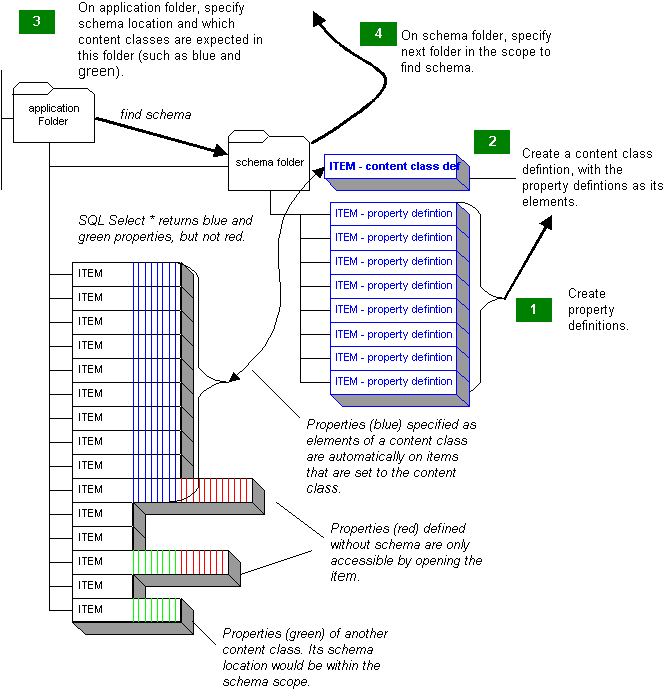
| Platform SDK: Exchange 2000 Server |
[This is preliminary documentation and subject to change.]
There are just a few tasks for setting up schema, and there is no required topology for arranging folders and items. The Web Store is suited to suit your business logic, and as you work with the Web Store, you will likely see ways to refine your schema for efficiency.
The Web Store schema has the following components:
Create items in a folder that are property definitions. The convention is to create these items in a designated schema folder, but they can exist in any folder.
If you create property definitions, they must belong to one or more content classes so that they are discoverable by applications and SQL searches. Create the content class definition in the same schema folder that contains the property definitions listed as its elements.
When you specify the content class for an item, using the DAV:contentclass property, all properties listed as elements in that content class are incorporated into the schema for that item. To have those properties returned in a SQL search of all properties in the itemís folder, the content class must be listed among the expected content classes for that folder using the urn:schemas-microsoft-com:exch-data:expected-content-class property.
The application folder, folder of the items for which you created property definitions, must have its schema-collection-ref property set to the URL of the schema folder. Important, but not required, is the folderís baseschema property that specifies the next location for content class and property defintions.
The following figure summarizes the components and tasks just described.
